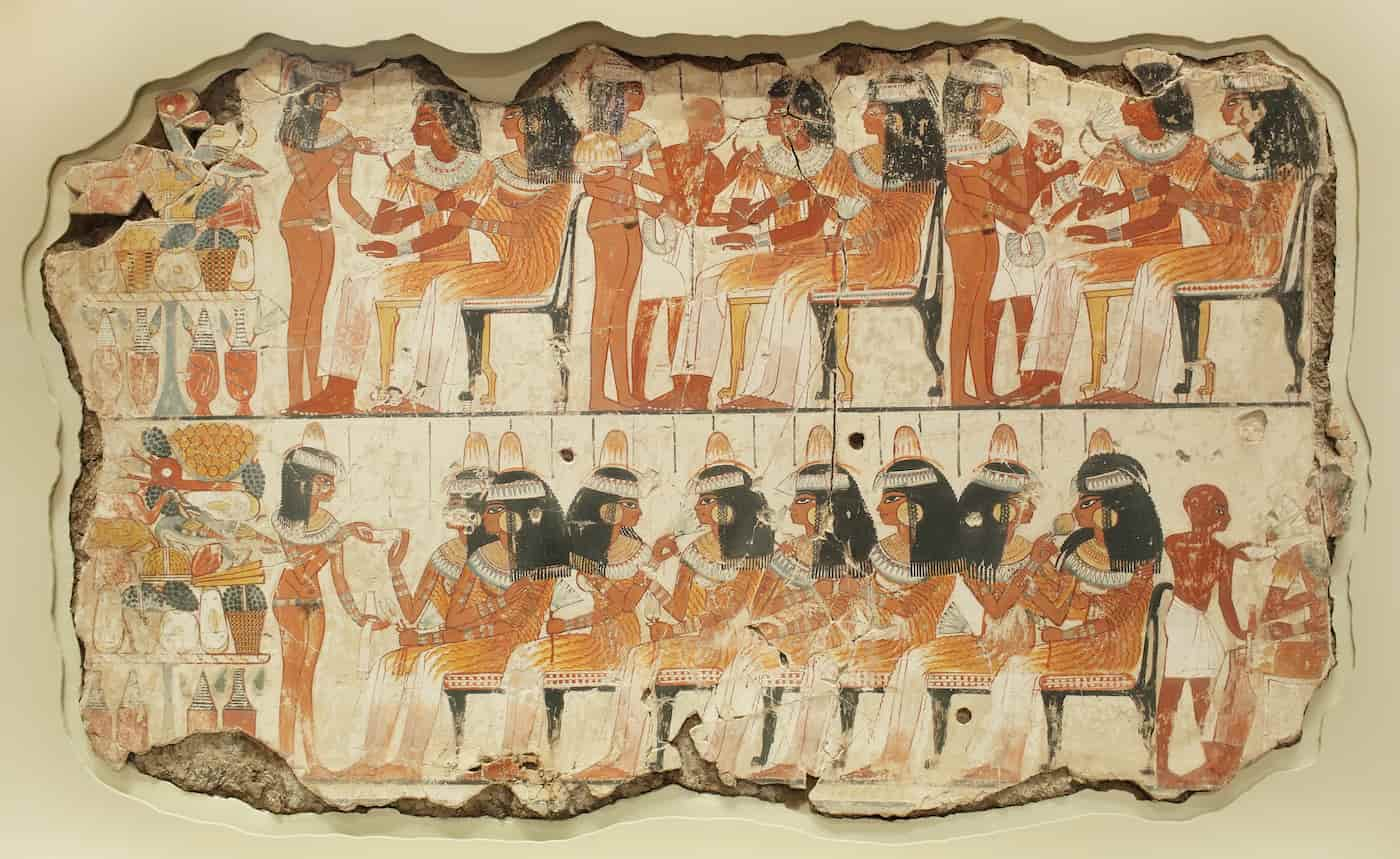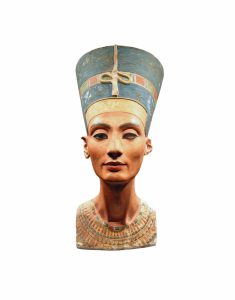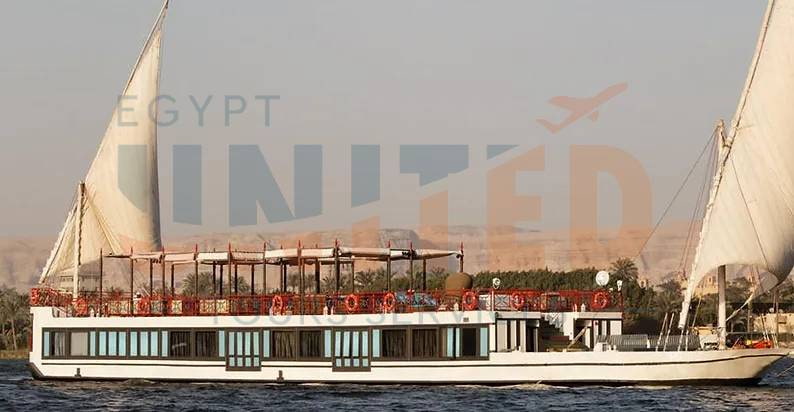Treasures and civilization of the ancient Egyptians
Welcome to the land of the pharaohs, We will talk about the Ancient Egyptian Civilization and what is involve from timeless artifacts and relics Ancient Egypt Artifacts. The Ancient Egypt Artifacts reflects the genius of the Egyptian man in art, architecture, and daily life thousands of years ago Ancient Egypt Artifacts.
The ancient Egyptians left behind a large collection of artifacts. these ancient egypt artifacts focus on daily life during the civilization’s existence , which lasted for nearly 3000 years. Ancient Egypt flourished as leading civilization in the Mediterranean region, and its heritage continues through a wealth of artifacts which left behind, including monuments, and artistic masterpieces. Through this precious treasure of information , Archeologists and researchers identified artifacts that were part of the daily life of the ancient Egyptians.
Example Of Ancient Egyptian Artifacts
1- The Ankh
The symbol of Ankh was one of the most important figures and artifacts in ancient Egypt life. In fact, it was representing the life itself. The Egyptians believed that this life was always held by the sun god Ra who was holding the Key of life or Ankh. Other meaning of Ankh symbol that it represents the Nile river, it flows from the South to the North were it’s divided to Delta.
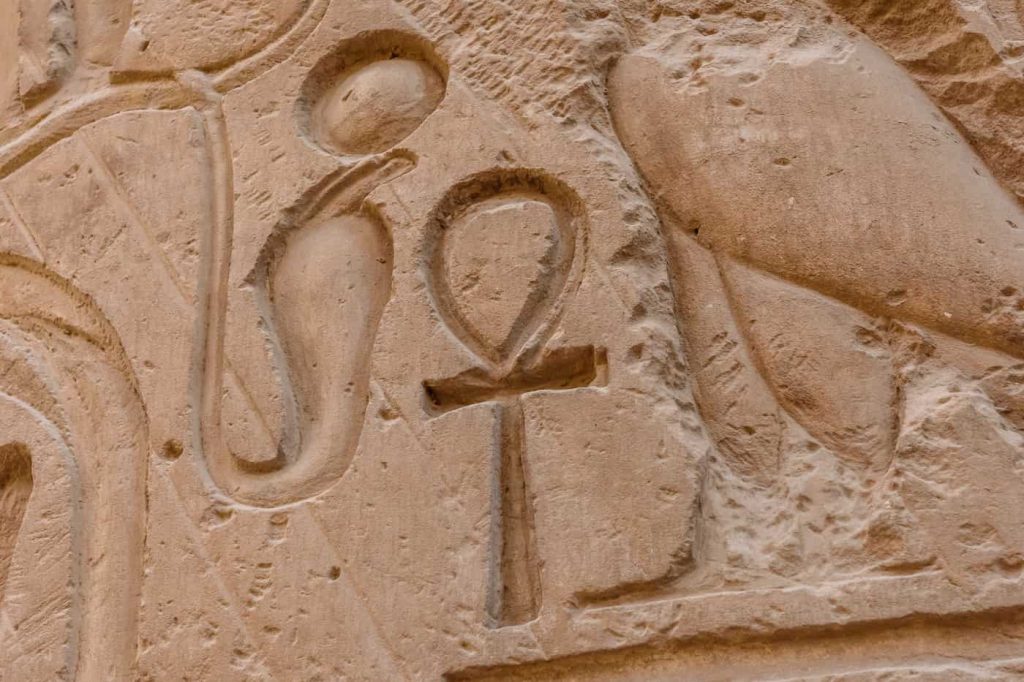
Ankh Symbole
2- Canopic Jars
These jars were containers to held internal body organs which removed during mummification. In ancient Egyptian funerary rituals, a Canopic jar was used as a covered pot of wood, stone, pottery, or faience. Ancient Egyptians buried the embalmed viscera in these jars.they removed from a body during mummification.
Egyptians used canopic jars from the era of the Egypt Kingdom to the Ptolemaic Period, and they usually were made from pottery.
3- Microlith

Microlith used by Egyptians to curve stones
An ancient Egyptian sharp and strong small piece of stone. It was always use to cut or shape other weaker or fragile types of stone. Ancient Egyptians used it also to have hair and nail cut. We found many of them in the tombs belonged to the predynastic period dating back to 3200 BC and before. The Microlith also was used by ancient Egyptians for making weapons such as arrows. This artifacts helped them to curve and cut beautiful statues and masterpieces.
4- Naos
A religious shrine, often portable, used for carrying a god’s image. The Naos was in most of the Ancient Egyptian Temples shrines and sanctuaries. Some of them were also holding the holy boats that used to hold gods statues.
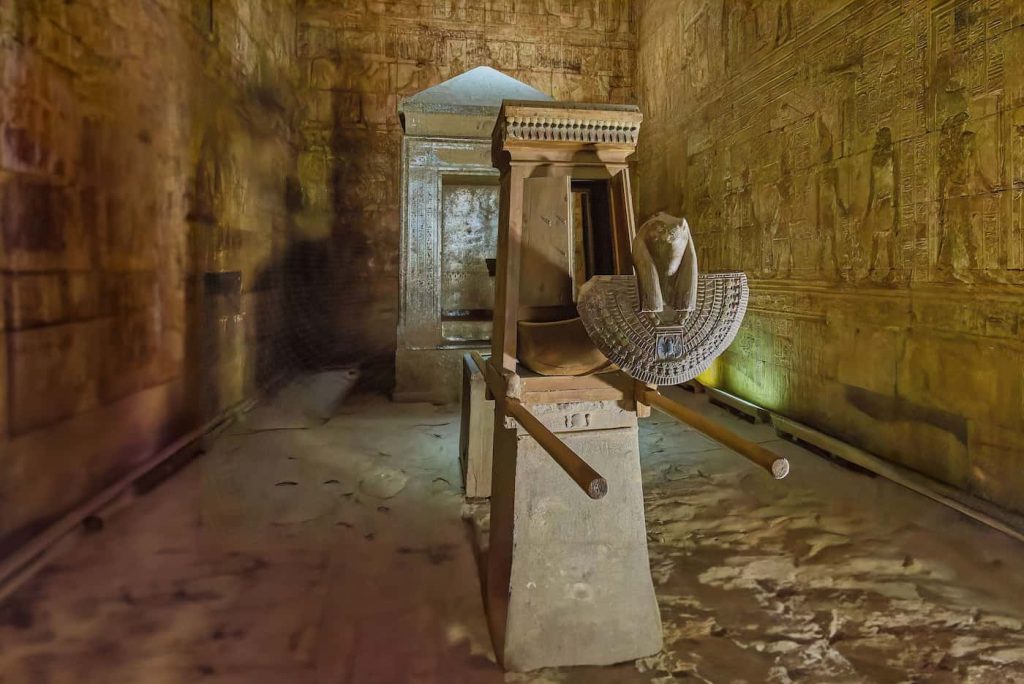
Sacrad boat and Naoh
5- Ostracon
A piece of pottery or limestone used for writing. The Ostracon were found in many ancient Egyptian tombs and some archeologists believed it was the dairy of the dead person.
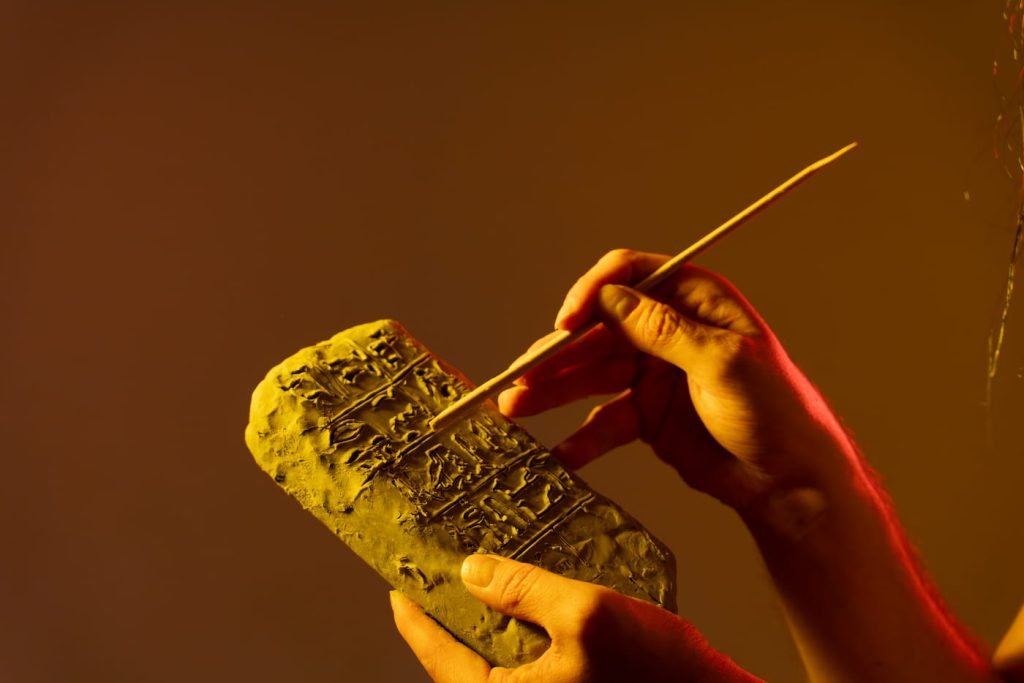
Ancient egypt Artifacts – Ostracon
6- Menat
A necklace composed of many rows of beads and an amulet, usually hung at the back of the neck as a counterpoise, And The Menat necklace was often carried or worn by women during religious ceremonies
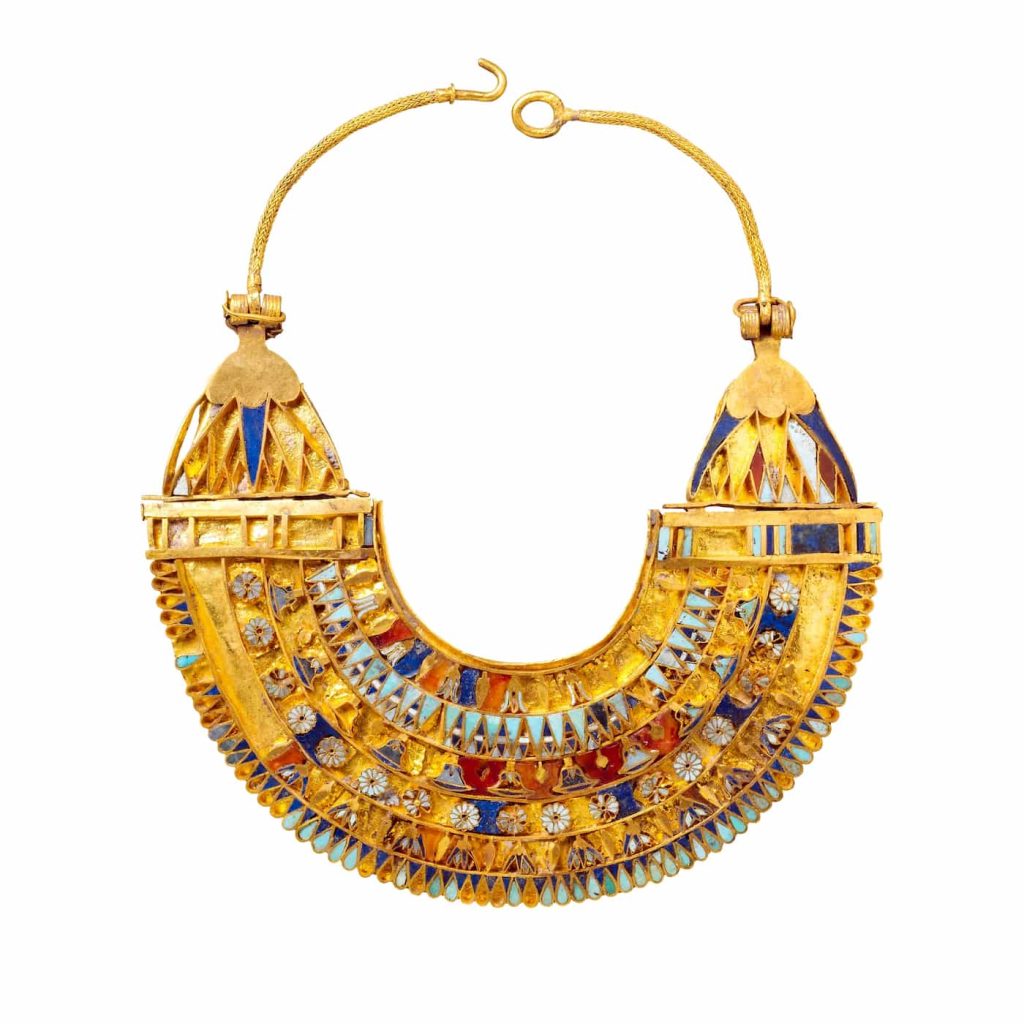
Menat ancient egypt artifacts and jewlery
7- Scarab
The Scarab was the god of good luck in Ancient Egypt. His name was Kheber and the normal Egyptians used to make it as an amulet or seal shaped like a dung beetle.
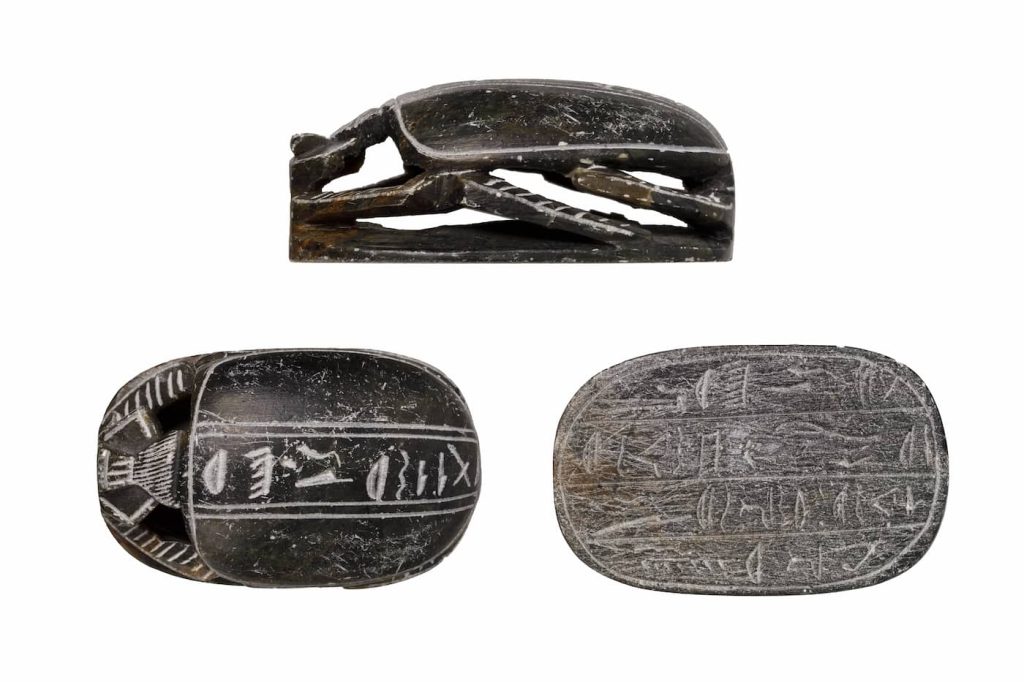
scarab ancient egypt artifacts
8- Sarcophagus
A sarcophagus is a stone coffin or a coffin container . Although ancient coffins were made to hold coffins within, the term has come to refer to any stone coffin . The Egyptian pharaohs of the 3rd Dynasty, which reigned from about 2686 to 2613 B.C.E, used the ancient sarcophagi.
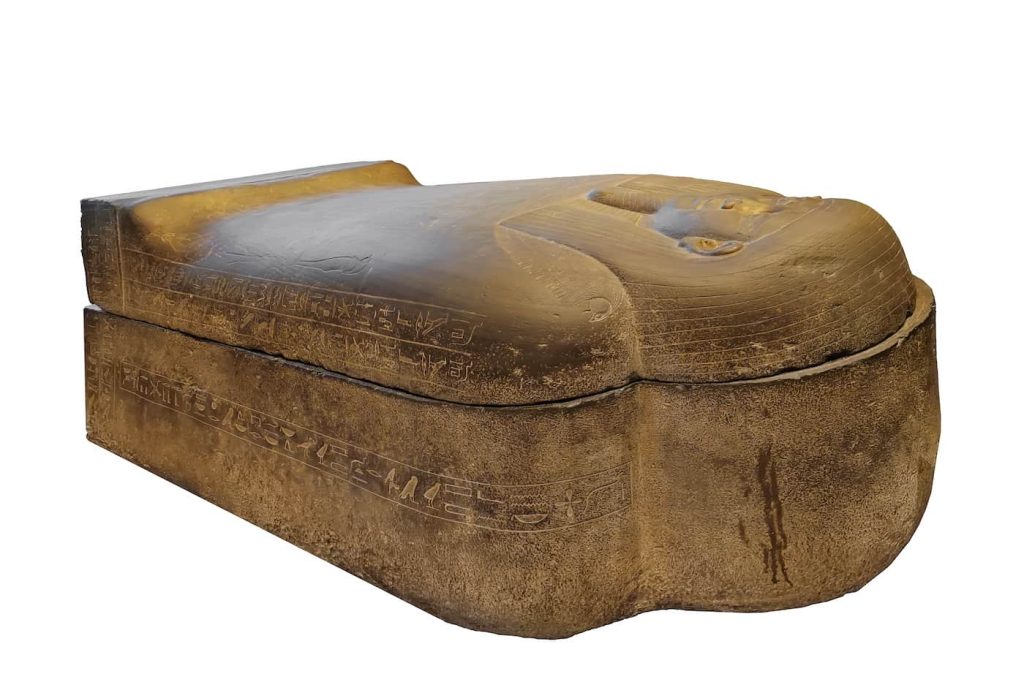
Ancient Egyptian Sarcophagus
9- Senet
Board games were a popular hobby in Egypt, and Senet was the most well-liked. Two people played it, sometimes on fancy carved and decorated boards, like the one from Tutankhamen’s tomb.
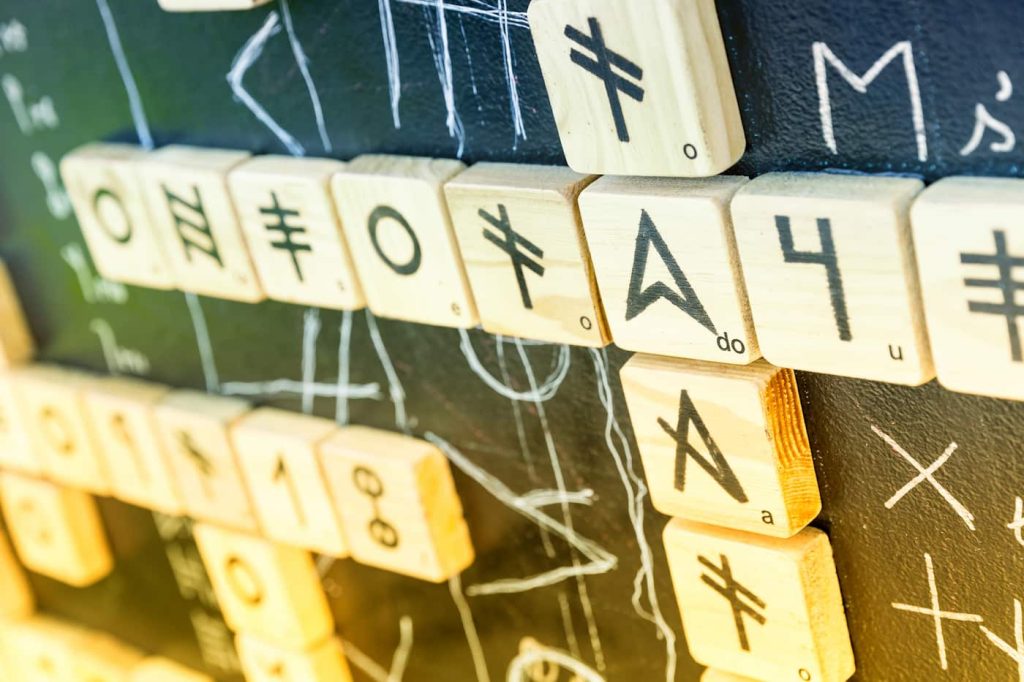
An ancient Egyptian board game
10- Ashabti
Small figures placed in tombs to act as replacements for the tomb owner in the afterlife. The ancient 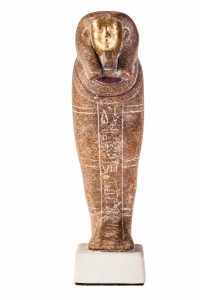 Egyptians use these types of statues or figures own their royal tombs to depect each day of the year. This means that each royal tomb was containing 365 Ashanti figures or statues. The types of Ashanti were always different as some of them used to take the facial features of the grave’s owner, while some others had the faces of ancient Egyptian goddess or goddesses. The materials used to make the Ashanti were also depends on how rich and powerful was the king. So, many of them were made out of gold or plated with gold. On the other hand, Nobles also had Ashabties in their tombs and most of them were from limestone.
Egyptians use these types of statues or figures own their royal tombs to depect each day of the year. This means that each royal tomb was containing 365 Ashanti figures or statues. The types of Ashanti were always different as some of them used to take the facial features of the grave’s owner, while some others had the faces of ancient Egyptian goddess or goddesses. The materials used to make the Ashanti were also depends on how rich and powerful was the king. So, many of them were made out of gold or plated with gold. On the other hand, Nobles also had Ashabties in their tombs and most of them were from limestone.
The Most Important Ancient Egypt Artifacts
Arifacts Found in The Treasure of King Tut Tomb
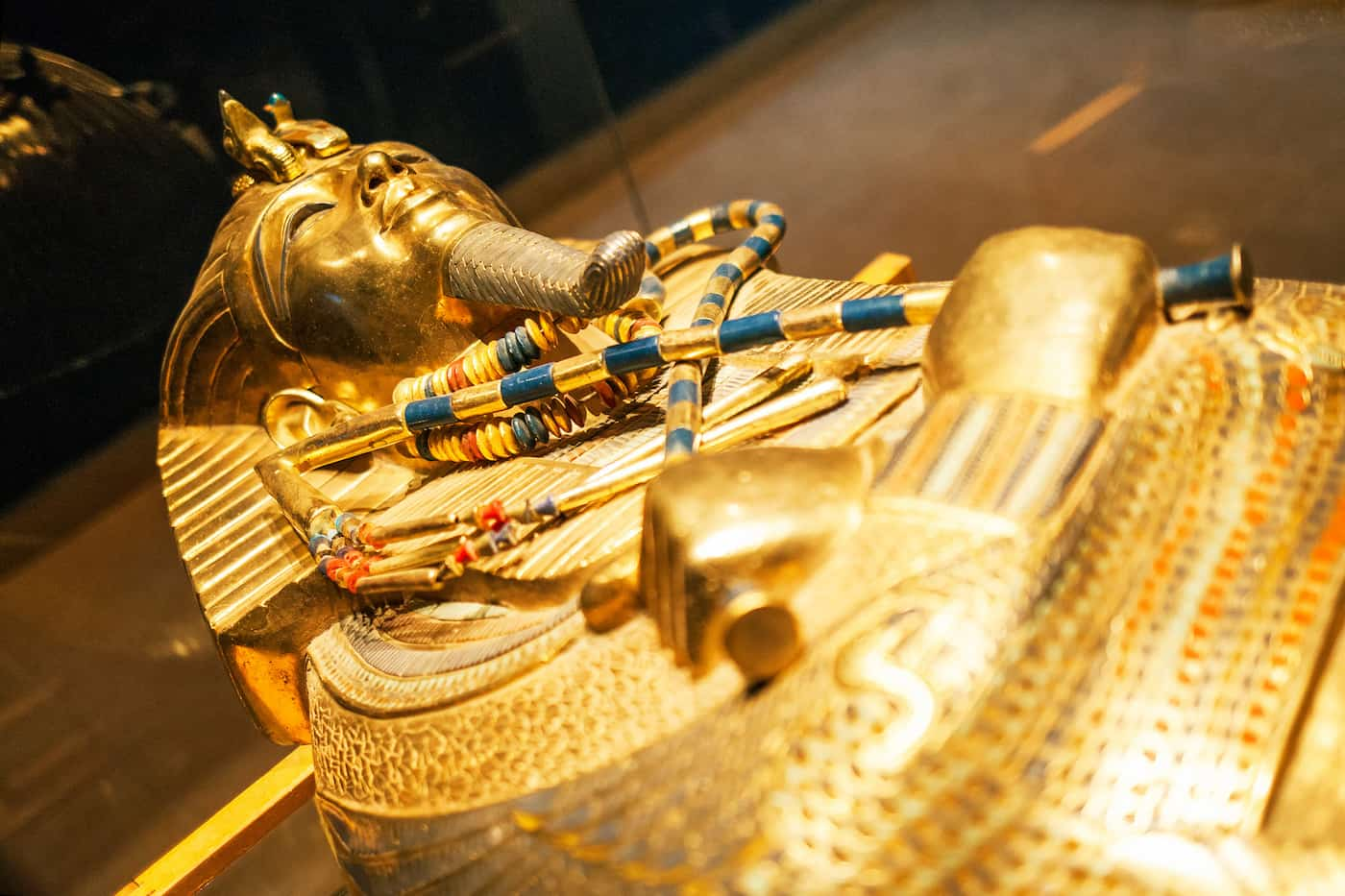
King Tut Artifacts
Tutankhamun was most important Ancient Egypt artifacts , he is one of the kings eighteenth dynasty of the new kingdom. He was one of the famous pharaohs kings because archeologists discovered his tomb and all his treasures completely, Also he died as a youth, and his death remains a mystery. In November 1922, archaeologists discovered Tutankhamun’s tomb, cemetery 62 in the Valley of the Kings. His room is approximately 6 * 4 cm and contains the original coffin and this coffin includs three inner coffins as follow:
The Inner Golden Coffin
- Coffin is from the pure gold, and his weight is about 110,4 kg as a mummy.
- Archaeologists found it inside the middle coffin, and it now exists in the Egyptian Museum.
The Middle Golden Coffin
- It was made from wood covered with sheet of gold and now exists in Grand Egyptian Museum.
The Large Golden Coffin
- It was made from gilded wood, Coffin’s dimensions: 223.5 cm length, 83.8 cm width, 105.5 cm height and now exists in Grand Egyptian Museum.
Rosetta Stone
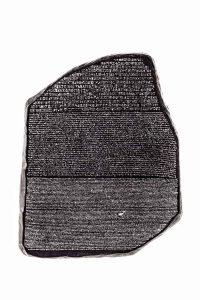
Rosetta Stone
A symbol for different things to different people, this dark-colored granodiorite stela bears the same text in three scripts—Demotic, hieroglyphic, and Greek.
In July 1799, French soldiers found the stone in the city of Rosetta (modern el Rashid) during Napoleon’s invasion of Egypt. Rosetta was located on a tributary of the Nile near the Mediterranean coast east of Alexandria. The stone is 113 centimeters high, 75 centimeters wide, and 27.5 centimeters thick Ancient Egypt Artifacts . It is inscribed with texts in three ancient languages: hieroglyphic, Demotic (or Coptic), and Greek. It dates back to King Ptolemy V’s reign. Hieroglyphic was used because the priests at that time still used it, and the common people used Demotic. So, the stone was written in all three languages so that both the king and the general public could read it.
The inscriptions on the stone are a letter of gratitude from a group of priests in the city of Memphis to King Ptolemy V. They thank him for exempting the temples from certain fees, and he wrote it in 196 BC.
Amulets And Papyri
Amulets
The Amulets were very important to ancient peoples, and the ancient Egyptians were
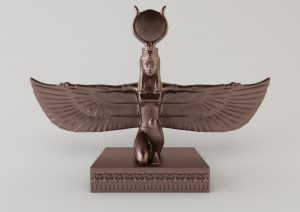
especially interested in them and sacred writings, it was very imortant of the Ancient Egypt Artifacts. They had many names for amulets, and their purpose was to protect the wearer. They represented various gods like Horus, Isis, and Ptah.
Papyri
The ancient Egyptians were the first to invent writing to express their thoughts. They deserve world wide praise for their discovery of a way to write down ideas and record them on different materials. Papyrus was their most important writing material. The discovery of papyrus was a major achievement in the history of writing,as it was the first step toward the invention of paper.
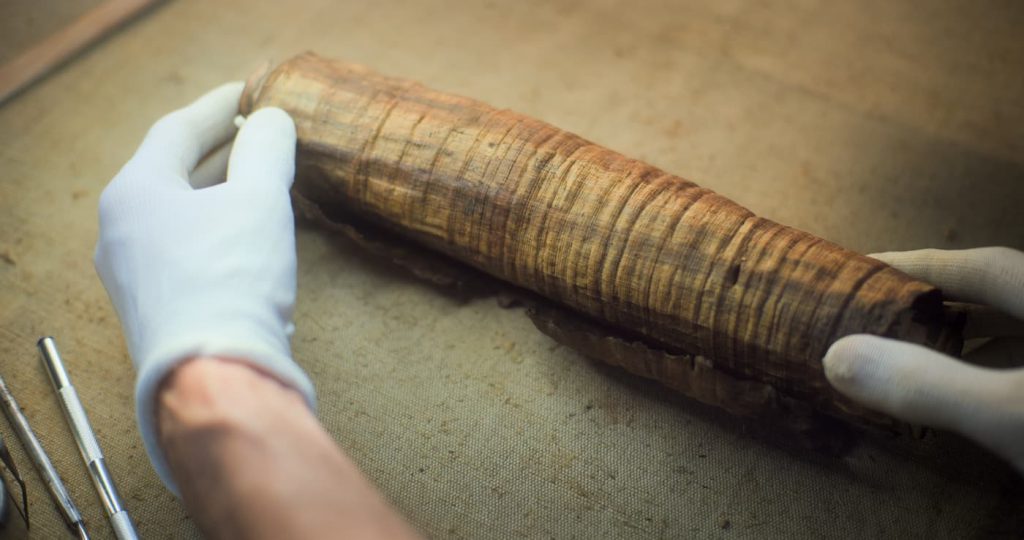
Ancient Egypt Papyrus artifact found by archaeologists
Khufu Statue
This small statue shows King Khufu, who built the Great Pyramid in Giza. At only 7.5 cm tall, it is the only statue we have confirmed to depict him. When it was first found, the head was missing, Sir Flinders Petrie noticed the break was recent and understood how important the discovery was. He ordered to search for the missing head, and they finally found it three weeks later.

